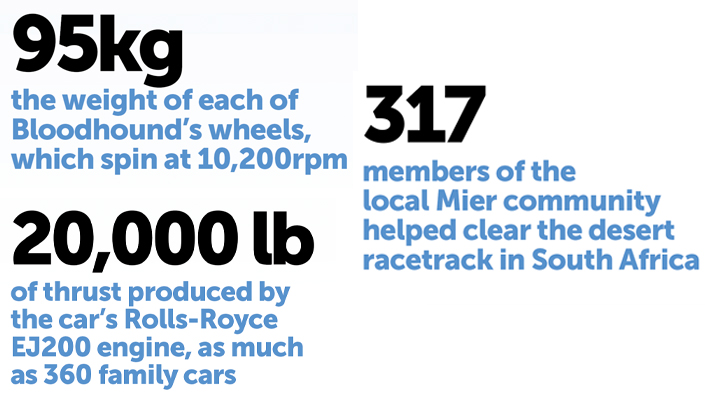Articles
In October, the new-look Bloodhound LSR car will run its first high-speed tests on a dry lake bed racetrack at Hakskeen Pan, in South Africa’s Northern Cape.
This attempt follows successful trials at Cornwall Airport near Newquay, when the vehicle reached 200mph (322km/h) in just eight seconds, driven by former RAF pilot Andy Green. This time, the team are targeting 500mph, a key milestone as they attempt to break the land speed record of 763mph, set by ThrustSSC in 1997.
“High-speed testing is a key part of setting a new world land speed record,” said Green, who was also the driver for that record-setting run. “Building on everything we achieved in Newquay in 2017, we’ll learn a tremendous amount by going fast on the desert the car was designed to run on. This is where science meets reality and it all starts to get really exciting!”

Turbulent times
The project has endured a difficult time since it was first announced in 2008. After that successful test back in 2017, the project ran into financial difficulties. The company behind the project went into administration, leaving a funding gap of £25m.
In December 2018, entrepreneur Ian Warhust stepped in to save the project. “Cut me in half, and it says engineer in the middle,” he said when asked why he wanted to save Bloodhound.
New challenges
Since relaunching in March 2019, with a new-look vehicle, the team have been focusing on the logistics of deploying to the Kalahari Desert, and modifying the car by uprating its springs and dampers and adding parachute braking. The lake bed’s 19km desert racetrack has been hand-cleared to remove 16,500 tonnes of rock, but still presents a challenging new surface for the vehicle, and modifications have been made to take that into account.
“The wheels have been designed for this desert lake bed,” said Warhurst.
Want the best engineering stories delivered straight to your inbox? The Professional Engineering newsletter gives you vital updates on the most cutting-edge engineering and exciting new job opportunities. To sign up, click here.